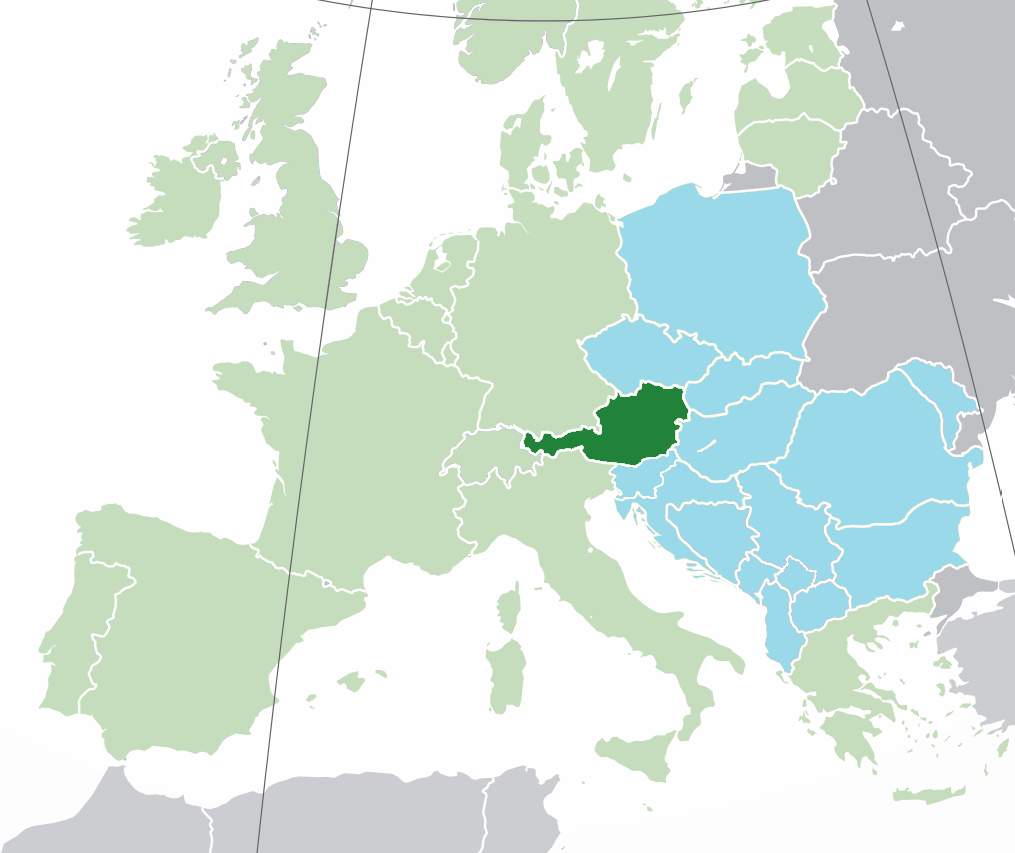
Austria participates with three groups located at
Institute of Physical Chemistry, University of Innsbruck
Institut of Analytical Chemistry and Radiochemistry, University of Innsbruck
Faculty of Physics, University of Vienna
The group at the Institute of Physical Chemistry of the University of Innsbruck, has been studying stable water, supercooled water, amorphous ices as well as more than 10 different forms of crystalline H2O-ice over the last decades. In the last couple of years the studies have been expanded to include aqueous solutions containing organic (e.g., glycerol), inorganic (e.g., LiCl) or biological solutes (e.g., monoclonal antibodies). Water and aqueous solutions are studied under extreme conditions, where the pressure ranges from the ultrahigh-vacuum to high-pressure up to 25 kbar and temperatures range from 4 K to 500 K.
The questions addressed in the group range from hydrogen-ordering transitions in crystalline ices, a possible liquid-liquid transition to explain the anomalies of water, phase transitions between different polyamorphic states, the glass-to-liquid transition of water, ice nucleation ability of solutes in supercooled water, and properties of hydration water, freeze-concentration effects, freeze-damage and chemical reactions in supercooled water aimed at isolating metastable intermediates, such as carbonic acid, to name the most important ones.
Experimental methods involve hyperquenching and vapor-deposition to avoid formation of crystalline ice – a technique that was pioneered in Innsbruck and received the 2017 chemistry Nobel prize cryo-microscopy (the preparation procedures developed in Innsbruck by Erwin Mayer in collaboration with Jacques Dubochet were awarded the 2017 chemistry Nobel prize) as well as high-pressure piston-cylinder experiments.
Characterization techniques for the samples involve optical methods, namely cryo-microscopy, spectroscopic methods, namely IR (mid-, far- and near), UV-VIS and confocal Raman spectroscopy as well as thermal methods (differential scanning calorimetry, thermogravimetry and differential thermal analysis) and diffraction methods, namely powder X-ray diffraction. All these methods are carried out in house in Innsbruck.
Contact person:
Prof. Dr. Thomas Lörting (e-mail: thomas.loerting@uibk.ac.at)
Institute of Physical Chemistry
University of Innsbruck
Innrain 52c
AU-6020 Innsbruck
The second group from the University of Innsbruck is affiliated to the Institute of Analytical Chemistry and Radiochemistry and is, similarly as upper mentioned Institute of Physical Chemistry, a part of interdisciplinary Chemistry and Biomedicine (CCB) unit of University of Innsbruck, Austria. The institute pursues state-of-the-art analytical chemistry, development of new methods, as well as design and implementation of practical innovation in diverse applications in science and industry.
The host institution is worldwide recognized centre of the development of analytical spectroscopy (FTIR, NIR, Raman, SERS, hyperspectral imaging – Vis, MIR, NIR, Raman), mass spectrometry and chromatographic methods. The unit is uniquely involved in the basic research and applications of analytical methods. The Institute of Analytical Chemistry and Radiochemistry offers excellently equipped laboratory of optical spectroscopy (multiple benchtop and miniaturized NIR spectrometers, IR and ATR-IR spectrometers, Raman imaging system Bruker Senterra II, portable Bruker Bravo Raman spectrometer, miniaturized Metrohm Misa), numerous liquid chromatographs and mass spectrometers (HPLC, LC, micro-LC and LC-ESI-MS/MS, MALDI-TOF/MS, ESI, TQMS). The institute has a long-established research activity in the design of spectroscopic methods, optimization of the performance of miniaturized instruments for in-the-field applications, data-analytics, or development substrates for solid phase extraction. In addition to state-of-the-art know-how and infrastructure, it constitutes to global-wide scientific network with other leading research centres and industrial partners. The institute has a long-established research activity within the worldwide network of innovation in analytical chemistry.
Contact person:
Prof. Dr. Christian Huck (e-mail: christian.w.huck@uibk.ac.at)
Institute of Analytical Chemistry and Radiochemistry
University of Innsbruck
Innrain 80-82
AU-6020 Innsbruck
The work of the group from University of Vienna, Faculty of Physics focuses on the research area of Theoretical and Computational Physics of Soft Condensed Matter.
The term Soft Matter encompasses a large variety of systems of fundamental interest, possessing at the same time enormous technological and biological relevance, e.g.: polymers, colloids, DNA-molecules, proteins, membranes etc. Soft systems are characterized through three basic properties: first, they are solutions/suspensions of mesoscopic macromolecular aggregates on a microscopic solvent. Second, in stark contrast to their atomic counterparts, the effective forces between the dissolved particles can be tuned through changes in the architecture of the molecules, the temperature, as well as the salinity and the pH of the solvent. This property renders soft matter systems as prime candidates for the targeted and controlled design of material properties at the molecular scale, since the interparticle interactions dictate the macroscopic equilibrium and dynamical behaviour of the system. Finally, another extremely important property of soft matter is its high sensitivity to external fields, which offer an additional possibility to externally steer the behaviour of soft materials.
The central approach permeating our research philosophy is to perform accurate coarse-graining processes on the complex, multicomponent systems encountered in soft and biological matter, so as to drastically reduce the inherent complexity and bridge the scales from a (highly complex) microscopic one to a more manageable mesoscopic.
Afterwards, the subsequent bridging from the mesoscopic to the macroscopic scale follows through rules, techniques and procedures known from the theory of simple fluids and crystals.
This approach has proven extremely fruitful, e.g., in the domain of materials science and engineering, since it allows for the prediction of the forms of self-organization of matter, starting from the basis of the properties and architecture of the constituent macromolecules at the microscopic scale. What is even more important, the technique allows the study of not only equilibrium properties (fluid structure, crystallization) but also of dynamical ones (glass formation and rheology).
The typical techniques that we apply along these lines draw from a diverse and mutually complementary pool of approaches, some of which have been co-developed and refined in the group: scaling theory of polymers, density functional theory (static and dynamical), integral equation theories, renormalization-group methods, phonon theories, genetic algorithms, as well as mode coupling theory of glass formation.
Contact person:
Prof. Dr. Christos Likos (e-mail: christos.likos@univie.ac.at)
Faculty of Physics
University of Vienna
Boltzmanngasse 5
AU-1090 – Vienna
